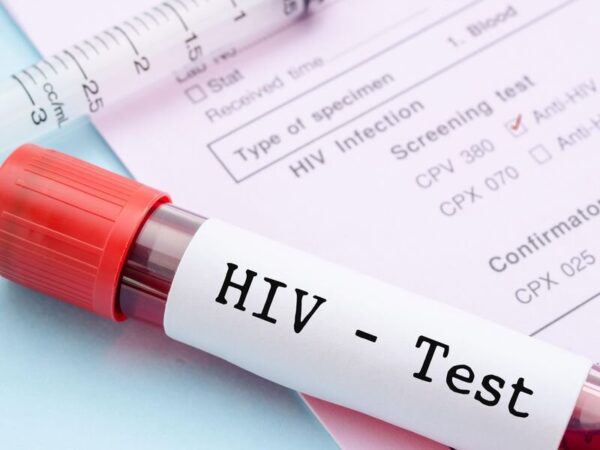For the first time in over a decade, new HIV diagnoses among heterosexuals are higher than for gay and bisexual men, according to new figures released today (Tuesday, September 26) from Public Health Scotland.
Last year in Scotland, 42% of all new HIV diagnoses were in heterosexuals, compared to 29% in gay, bisexual and other men who have sex with men (GBMSM). Levels of late diagnosis were also slightly elevated in heterosexuals,meaning damage to the immune system may have already begun 27% of those who acquired HIV through heterosexual sexual intercourse were diagnosed at a late/very late stage – this compares to 23% of GBMSM.
Whilst GBMSM remain more impacted by HIV relative to population size, targeted interventions in this group have led to one of the big success stories of the epidemic. The steep decline of 37% since 2017 in new HIV diagnosesamong GBMSM is partially attributed to uptake of the HIV prevention pill PrEP among this group, who between July and December 2022 accounted for 85% of first time prescriptions. It’s also thanks to accessible HIV testing, condoms, health promotion and people living with HIV’s adherence to treatment which supresses the virus and means it can’t be passed on to partners.
“Scotland can – and should – be the first country in the world to eliminate new transmissions of HIV and Public Health Scotland’s data shows some progress towards this goal.”
New diagnoses in heterosexuals has seen an increase of 13% since 2019. Whilst the picture is incomplete without testing data, it reinforces the urgent need for a national HIV action plan that sets out how equitable progress to the Scottish Government’s 2030 HIV goal will be made by all communities affected by HIV. This must include the scaling up of testing through the introduction of HIV opt-out testing in Scotland’s emergency departments, as well as improving access to PrEP by making it freely available in GP surgeries, community pharmacies, and online. This is of enhanced importance, with today’s data revealing that 93% of those prescribed PrEP in Scotland are GBMSM and 92% are White.
The latest HIV statistics from Public Health Scotland also shows there were 317 new diagnoses of HIV in Scotland in 2022 – a 49% rise on the previous year but a 2% decline on comparable pre-pandemic levels. Of diagnoses recorded in 2022, 108 were classed as new, first ever infections. Newly recorded cases of HIV in people who inject drugs has significantly declined by 82% from 2019 to 2022, however the impact of the pandemic on testing rates amongst this community means that these numbers are caveated. As Scotland moves towards the development of Safe Drug Consumption Facilities, it is vital that HIV testing and care is a core component of these programmes.
The number of people estimated to be living with undiagnosed HIV in Scotland remains at 500. Today’s statistics also show that only 84% of those diagnosed with HIV in Scotland are recorded as attending specialist HIV care, with anestimated 1,461 people not diagnosed or not engaged with HIV clinical services – reinforcing the need for renewed efforts to re-engage people into HIV care.
“These statistics show that Scotland is making progress on ending new cases of HIV by 2030 – but we won’t get there by accident.”
Data on testing rates in Scotland and whether these have recovered from the COVID-19 pandemic remain unavailable. As a result of this, caution must be taken when reading and interpreting new data. The Scottish Government and Public Health Scotland should work to ensure this gap in data is remedied for future publications. Terrence Higgins Trust are calling for improved HIV data collection in Scotland, with a focus on the inclusion of testing rates and consistent demographic breakdown in HIV statistical releases.
Alan Eagleson, Head of Scotland Services at Terrence Higgins Trust, said: “These statistics show that Scotland is making progress on ending new cases of HIV by 2030 – but we won’t get there by accident. The clock to 2030 is clicking and while today’s statistics show some progress, more must be done to ensure that equitable progress is being made, and that no communities are left behind.”
“Ramping up HIV testing is fundamental to this. We know that opt-out HIV testing in emergency departments removes some of the persistent barriers that prevent individuals from accessing a HIV test and that this is highly beneficial to those who are less likely to be in regular contact with a sexual health clinic. The programme in England has been a phenomenal success in identifying new cases of HIV, Hepatitis B and Hepatitis C – in just 16 months over 3,000 people have been found and diagnosed with HIV and hepatitis viruses. This intervention works – and must be rolled out as a matter of urgency in Scotland.”
“The availability of PrEP has been a success story in Scotland’s mission to end new cases of HIV. While we await a finalised proposal of what Scotland’s online PrEP clinic will look like, further work must be undertaken now to expand access of the pill outside of sexual health services and into GPs and community pharmacies.”
“Scotland can – and should – be the first country in the world to eliminate new transmissions of HIV and Public Health Scotland’s data shows some progress towards this goal. The Scottish Government must now set out a clear action plan that delivers on Scotland’s 2030 HIV ambition.”
















